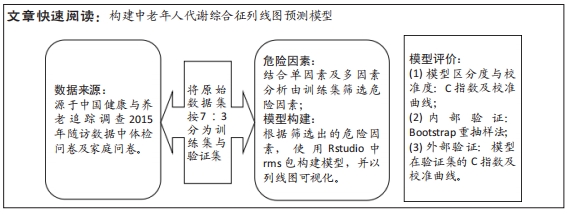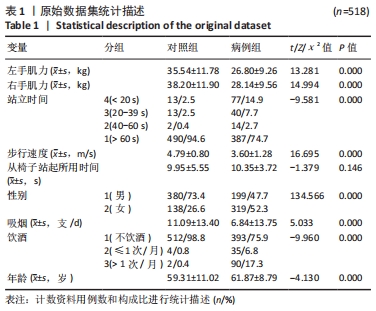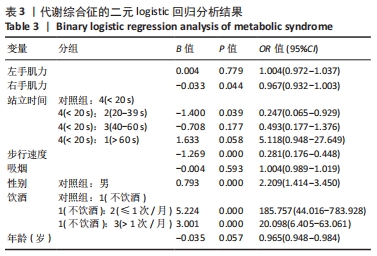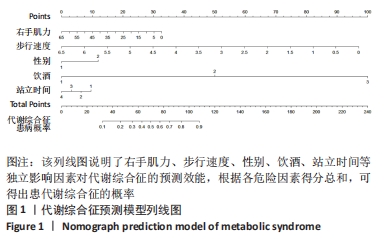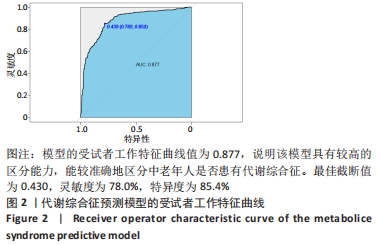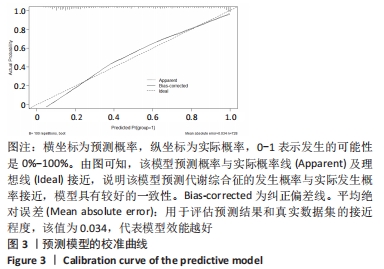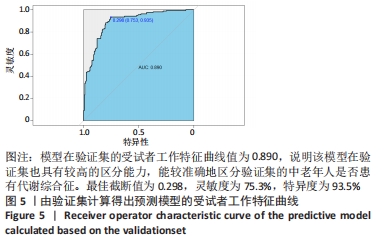[1] 中华医学会糖尿病学分会代谢综合征研究协作组.中华医学会糖尿病学分会关于代谢综合征的建议[J].中国糖尿病杂志,2004,12(3): 156-161.
[2] 曾洪利,黄鲁,王万淑.内脏脂肪面积与代谢综合征的相关性分析[J].中国疗养医学,2021,30(12):1255-1258.
[3] XU Y, WANG L, HE J, et al. Prevalence and Control of Diabetes in Chinese Adults. JAMA. 2013;310(9):948-959.
[4] GRUNDY SM. Metabolic syndrome pandemic. Arterioscler Thromb Vasc Biol. 2008;28(4):629-636.
[5] 刘鲁豫,刘爱霞,王露露,等.老年代谢综合征流行病学调查及预防措施[J].公共卫生与预防医学,2021,32(3):107-110.
[6] 杨剑,许雷,王绍坡,等. 老年代谢综合征患者中医体质辨识[J]. 中国老年学杂志,2021,41(13):2715-2718.
[7] 孙广山.代谢综合征[J].医学理论与实践,2009,22(1):1-3.
[8] 马丽,李红.粪菌移植在代谢综合征治疗中的研究现况[J].国际内分泌代谢杂志,2021,41(4):300-303.
[9] MCCRACKEN E, MONAGHAN M, SREENIVASAN S. Pathophysiology of the metabolic syndrome. Clin Dermatol. 2018;36(1):14-20.
[10] ECKEL RH, GRUNDY SM, ZIMMET PZ. The metabolic syndrome. Lancet. 2005;365(9468):1415-1428.
[11] 庞利娟,白荣莉,湛斌,等.基于数据挖掘技术对代谢综合征治疗方法的分析[J].重庆医学,2019,48(7):1168-1171.
[12] SHERLING DH, PERUMAREDDI P, HENNEKENS CH. Metabolic Syndrome. J Cardiovasc Pharmacol Ther. 2017;22(4):365-367.
[13] SAKLAYEN MG. The Global Epidemic of the Metabolic Syndrome. Curr Hypertens Rep. 2018;20(2):12.
[14] 杨蓉,王鹏,屈文静.脓毒症患者继发持续性炎症-免疫抑制-分解代谢综合征的影响因素及预测模型构建[J]. 海南医学,2021, 32(17):2182-2185.
[15] 王传海,王新江,田慧,等.老年人腹部脂肪(CT测量)分布与体质指数及代谢综合征的关系[J]. 中华医学杂志,2014,94(12):908-912.
[16] 闫小光,王宝,张亚强,等.老年代谢综合征影响因素及其中医证候特征的临床分析[J]. 世界中西医结合杂志,2021,16(5):957-960.
[17] ZHAO Y, STRAUSS J, YANG G, et al. China Health and Retirement Longitudinal Study, 2011-2012 National Baseline Users’ Guide, National School of Development, Peking University. 2013.
[18] 梁雪. 痰湿体质人群易发代谢综合征的危险因素筛选和诊断模型构建研究[D].北京:北京中医药大学,2017.
[19] 张雪,谭明英,陈华英.全程管理模式对门诊疑似乳腺癌患者诊疗依从性的影响研究[J]. 成都医学院学报,2021,16(2):157-160.
[20] 李潇骁,郝聪,贺新宁,等.中国中老年人群髋部骨折疾病负担及其影响因素分析[J]. 中华骨科杂志,2020,40(21):1461-1468.
[21] 涂永前,金旻禛,张晨,等.城镇低龄老年人力资源开发的影响因素及供需匹配研究——基于北京、天津和济南的调研[J]. 创新, 2021(1):9-23.
[22] 蔡伦. 基于G--formula模型的中国中老年人跌倒的模拟干预和中介效应分析[D]. 厦门:厦门大学,2019.
[23] JUTBERGER H, LORENTZON M, BARRETT CONNOR E, et al. Smoking predicts incident fractures in elderly men: Mr OS Sweden. J Bone Miner Res. 2010;25(5):1010-1016.
[24] 刘静,赵冬,刘军,等. 代谢综合征与自由脂肪酸的关系[J]. 中华心血管病杂志,2005,33(7):653-657.
[25] 陈晓梅. 105名健康体检者颈动脉病变及相关危险因素探讨[J]. 实用医学影像杂志,2013,14(4):298-299.
[26] MAARTEN VS,KAREL GM,DE AH, et al. Sample size for binary logistic prediction models: Beyond events per variable criteria. Statistical Methods Med Res. 2018:096228021878472.
[27] 张丽伟,江淑芳,狄佳,等. 基于倾向性评分匹配的髋关节术后肺炎危险因素[J]. 中国感染控制杂志,2021,20(7):607-613.
[28] 范建高, 朱军. 饮酒与代谢综合征[J]. 国际内分泌代谢杂志,2004, 24(6):370-372.
[29] 李亚茹,赵丽云,于冬梅,等.中国成人饮酒与代谢综合征的关系[J].卫生研究,2019,48(4):531-536.
[30] 冯磊,年士艳,山德生,等. 不同性别代谢综合征患病情况分析[J]. 实用医学杂志,2007,23(5):664-665.
[31] 徐旭,刘耘,梁国威.代谢综合征患病率随性别和年龄的变化趋势[J].医学研究杂志,2011,40(5):88-91.
[32] 刘颖,弓岩岩.代谢综合征危险因素与发病关系的前瞻性分析[J].解放军预防医学杂志,2020,38(7):53-56.
[33] 任重宇,杨光,白翠瑾,等.代谢综合征差异下区域老年人运动能力的比较[J].中国老年学杂志,2016,36(4):896-898.
[34] KIM TN, PARK MS, YANG SJ, et al. Prevalence and Determinant Factors of Sarcopenia in Patients With Type 2 Diabetes: The Korean Sarcopenic Obesity Study (KSOS). Diabetes Care. 2010;33(7):1497-1499.
[35] EVANS WJ, PAOLISSO G, AB BA TECOLA AM, et al. Frailty and muscle metabolism dysregulation in the elderly. Biogerontology. 2010;11(5): 527-536.
[36] 齐淑静,齐瑞霞,张午临,等.肌肉减少症与代谢综合征关系的研究进展[J].肿瘤代谢与营养电子杂志,2018,5(3):324-327.
[37] MOMMA H, NIU K, KOBAYASHI Y, et al. Skin advanced glycation end product accumulation and muscle strength among adult men. Eur J Appl Physiol. 2011;111(7):1545-1552.
[38] SEMBA RD, BANDINELLI S, KAI S, et al. Relationship of an advanced glycation end product,plasma carboxymethyl-lysine,with slow walking speed in older adults: the InCHIANTI study. Arbeitsphysiologie. 2010; 108(1):191-195.
[39] IASONOS A, SCHRAG D, RAJ GV, et al. How to build and interpret a nomogram for cancer prognosis. J Clin Oncol. 2008;26(8):1364-1370.
[40] 张君玲,覃健,许霞,等.广西长寿地区老年人代谢综合征的患病情况分析及预测模型建立[J].老年医学研究,2021,2(4):18-22.
[41] 杨兴华,陶秋山,孙凤,等.台湾地区35-74岁健康体检人群代谢综合征发病风险预测模型的建立[J].中华流行病学杂志,2013,34(9): 874-878.
[42] 孙苑潆,杨亚超,曲明苓,等.健康管理人群代谢综合征发病风险预测模型[J].山东大学学报:医学版,2017,55(6):87-92.
[43] 龙玉其.医疗服务体系的满意度评价——基于2557个城乡不同收入家庭的调查[J].社会保障研究,2011(1):92-96.
[44] 刘增超,袁建芬,胡磊.无锡市新区社区卫生医疗服务满意度综合评价[J].公共卫生与预防医学,2015,26(4):58-60.
[45] 夏天,郝林,蒋博,等.预测输尿管结石ESWL清石率列线图的建立与内部验证[J].徐州医科大学学报,2021,41(7):515-521.
[46] 谷鸿秋,王俊峰,章仲恒,等.临床预测模型:模型的建立[J].中国循证心血管医学杂志,2019,11(1):14-16+23.
[47] 谷鸿秋,周支瑞,章仲恒,等.临床预测模型:基本概念、应用场景及研究思路[J].中国循证心血管医学杂志,2018,10(12):1454-1456+1462.
[48] 文玲子,王俊峰,谷鸿秋. 临床预测模型:新预测因子的预测增量值[J]. 中国循证心血管医学杂志,2020,12(6):655-659.
|
